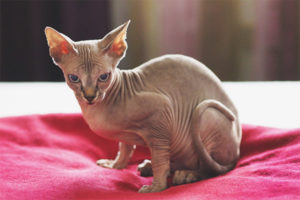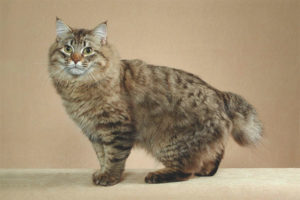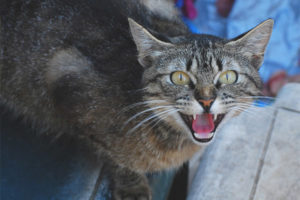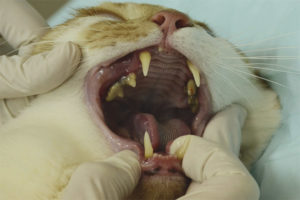The content of the article
Everyone knows the ubiquitous cat nature, because of which mustachioed friends constantly get into trouble. Cats are hunters by nature, so they always try to find and bring prey. Not all owners are able to keep track of the pet of the family and predict when the animal can harm itself. So, if a cat eats a poisoned mouse, urgent measures must be taken, especially when the first symptoms appear. But, first things first.
Symptoms of zoocoumarin poisoning
Often, mice and rats are poisoned with rat poison, which is a chemical in the zoocoumarin category. If the pet was poisoned by them, then the following symptoms are referred to symptoms.
- The animal develops bleeding, which is not always of the same nature. It can be uterine, gastric or nasal hemorrhage. Also often comes blood from the mouth. Such symptoms continue and develops over 10 days. The toxin is poorly washed out of the body, so the animal needs veterinary care.
- Not in all cases of poisoning, the cat will feel sick and vomit. But immediately after consuming the poisoned mouse, the pet will vomit. Further, the symptoms may temporarily disappear.
- Bleeding of an internal nature is not excluded, in which external signs will be absent. If a pet does not receive medical attention in a timely manner, he will die.
It is possible to identify that it was the zoo-coumarins that poisoned the pet. But you need to study the scene. If dead mice lie in this area, they will certainly experience bleeding from the mouth or rectum.
Symptoms of poisoning by other poisons
If the mice in your cat's habitat were poisoned with other rat poisons, then the signs of poisoning will be as follows.
- When it is too excited, all the symptoms of nervousness are manifested, violent mobility is observed. The animal literally cannot sit even for ten minutes, constantly moving.
- Impaired coordination of movements is a clear sign of poisoning by poison for rat poisoning. If the pet has a strange and unstable gait, limbs give way, this is a sure symptom of poisoning. The animal may fall on its side or shake its head, as in a nervous tic.
- All poisons of a different nature are accompanied by action on nerve endings. The cat will certainly suffer from spasms of muscle fibers, cramps or subtle muscle twitches.
- The animal can play in an instant, in the second it is already asleep. This indicates lethargy, apathy, poor health. Also, the temperature rises sharply to such boundaries that you have not seen before.
First aid
If you probably know that your pet used a poisoned rodent, then you need to urgently provide first aid. Follow the sequence so that the situation does not get out of hand.
- First you need to induce vomiting. But such manipulations are carried out only in those cases when the animal ate incomprehensible food of a suspicious nature with you. In all other cases, the toxic substance has already spread through the bloodstream throughout the body, vomiting will not help. To provoke vomiting, we repeat - if necessary, apply a solution of filtered water and peroxide concentration of 3%. The components are connected in a ratio of 1 to 1, per cat weight of 2 kg. accounts for a teaspoon of raw materials. Then, the resulting composition is poured into the oral cavity of the animal by force. A syringe or other similar device may be used.As an alternative, the solution is not prepared from peroxide, but from salt and water.
- To neutralize toxic substances in the stomach cavity, a drug with an absorbing effect is used. Coal, polysorb or another similar medication is suitable. It must be measured taking into account the weight of the cat, stirred in 150 ml. water and pour into the mouth of a mustached friend.
- After the manipulations, the pet must be fed with products enveloping the mucous membranes of the stomach. This will reduce the intensity of absorption of poison into the walls of the esophagus. Raw quail / chicken eggs, flaxseed decoction or milk jelly are suitable as such products.
- It is important to remember forever that absorbent preparations and food should be given to the pet only when vomiting is completed. 3 hours after the meal, you need to water the cat a laxative. For this purpose, liquid paraffin, a solution of magnesium or sodium sulfate are used (a 2% solution is being prepared). Then an enema is done to cleanse the intestinal tract (inject 35 ml of clean, slightly warm water / saline into the rectum).
- In cases when blood coagulation is impaired in an animal, vitamin K is administered intramuscularly in a volume of 1-2 ml. The duration of recovery of a four-legged friend can vary within 3-12 weeks.
Zinc Phosphide Poisoning
- Most often, mice are poisoned with this drug. Zinc phosphide is found in rodent lures. The health hazard of a mustachioed friend arises only when this bait is consumed. If the cat eats a mouse infected with zinc phosphide, then there is no danger.
- If a four-legged pet consumes poison, the symptoms may be the most sad, even fatal. The first signs: vomiting with blood, convulsive seizures, difficulty breathing, pain in the gastrointestinal tract, the smell of fish from the mouth.
- If you do not panic and quickly help the animal, it can be saved. Otherwise, a fatal outcome will occur in a short period of time.
- If the cat was poisoned with zinc phosphide, before the arrival of the veterinarian, the animal must be flushed with a special means. This will require a 0.5% solution of copper sulfate and a 2% solution of baking soda. You can also give a drug ("Maalox").
Rehabilitation after poisoning
- In any case, even with minor poisoning, the cat should be taken to the veterinarian. Appropriate treatment should be provided at the time. Sometimes the animal can feel quite normal. But these are only external signs. As a rule, the consequences are manifested for some time.
- The pet must be given directional drugs. Provide proper care for the animal and follow the diet. After the first day during poisoning, the cat must be given sorbents and a large amount of purified water.
- After the second day, the animal is allowed to feed in small portions. Boiled meat, except for pork, must be present in the diet. Give low-fat, boneless fish in a boiled form. Steamed liver, cauliflower, carrots and beets are allowed.
- It is highly recommended to give cereal. Oatmeal, rice and buckwheat are best suited for this. After a few days, the cat is allowed to give raw eggs, meat, fish, and liver. Keep in mind all products must be of high quality.
If you see that the pet is not feeling well after eating the mouse, he needs first aid. Call your veterinarian immediately or take the cat to the clinic. Discuss all details with a specialist. Do not panic and act smoothly.
Video: first aid for cat poisoning










Submit